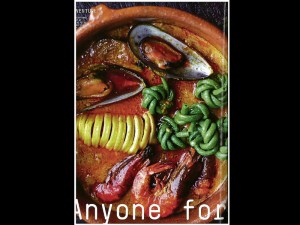THE MOST notable finding in the new SWS ratings of public satisfaction released this week, in my view, is that the present administration—as distinguished from the President as a single official—is the best-liked of all administrations ever since the ratings began in 1989.
The June 2011 net +46 satisfaction in the personal performance of President Noynoy Aquino, though on the upper end of the Good range (+30 to +49), is not special compared to the personal ratings of Presidents Cory Aquino, Fidel Ramos and Joseph Estrada at the same point in their terms, which were all Very Good and well into the +60s.
On the other hand, the June 2011 net +45 satisfaction in the performance of the national administration (administrasyong nasyonal in Filipino) is higher than all the administration ratings throughout the times of Estrada (peak of +36 in November 1998) and Ramos (peak of +32 in September 1992). The ratings of Cory Aquino’s administration started in February 1989, at its peak of +23. The GMA’s administration’s best was +27.
The national administration’s new net rating of +45 is derived by comparing the 62 percent satisfied with the 17 percent dissatisfied with its overall performance. It concerns the entire team, not just its leader.
The boses of the Bosses. Each quarterly Social Weather Survey also asks respondents to rate the national administration’s performance on a number of issues—17, in the June 2011 survey.
The collection of these ratings make up the administration’s report card on the 17 subjects, as graded by the people. It shows Filipinos as predominantly satisfied on 13 subjects, with mixed feelings on three subjects, and dissatisfied on only one subject.
The people’s grades are Good on five subjects: Being prepared for strong typhoons (net +46; first-time rated), Helping the poor (net +44), Foreign relations (net +43), Promoting the welfare of overseas Filipino workers (net +41; new record high), and Fighting terrorism (+30).
The grades are Moderate, i.e. between +10 and +29, on eight subjects: Implementing housing projects for the poor (net +27), Reconciliation with Muslim rebels (net +26), Reconciliation with communist rebels (net +23), Fighting crimes (net +23), Prosecuting tax evaders (net +22; new record high), Deciding quickly on important problems (net +22), Suppressing private armies in Mindanao (net +17), and Eradicating graft and corruption (net +16).
SWS uses the term Neutral for single-digit net ratings, between -9 and +9, since these are not significantly different from zero. In June 2011, these were the grades on three subjects: Fighting inflation (net +4), Ensuring that no family will be hungry (net +4), and Ensuring that oil firms don’t take advantage of oil prices (net zero; first-time rated).
In June 2011, the P-Noy administration got a Poor grade (from -10 to -29) on only one subject, namely Resolving the Maguindanao case with justice, which got a -16, termed Poor (between -10 and -29).
For years, the three failing subjects of the report card have been Eradicating corruption, Fighting inflation, and Ensuring that no family goes hungry. However, P-Noy’s administration has no negative grade on any of these subjects so far.
Fighting corruption. In its first four quarters, the grades on anti-corruption of P-Noy’s administration have been +22, +22, +14, and +16, or four Moderates, i.e. all significantly positive.
These come after the GMA administration’s anti-corruption grades of three Neutrals, twenty-two Poors, and nine Bads (between -30 and -49). Its best was +8; its worst was -40.
For its part, the Estrada administration got one Moderate, four Neutrals, and five Poors during its short existence. Its best was +12, and its worst was -21.
The Ramos administration collected one Moderate, six Neutrals, thirteen Poors, and four Bads, with +10 at best, and -38 at worst.
The Cory administration once got a record Very Good +65 for fighting corruption, back in the euphoria of 1986. Afterwards, it collected one Moderate, two Neutrals, six Poors, and one Bad, with a low point of -39.
Fighting inflation. In its first four quarters, the grades of P-Noy’s administration have been +19, +7, 0 and +4, or one Moderate and three Neutrals, but with no negatives. In contrast, none of the previous administrations ever got a positive grade on fighting inflation.
On this matter, the GMA administration’s grades were four Neutrals, eighteen Poors and twelve Bads, ranging from -3 at best to -43 (in three quarters) at worst.
The Estrada administration had two Neutrals, four Poors, and four Bads, ranging from -6 at best to -40 at worst.
The Ramos administration had two Neutrals, nine Poors, eight Bads, and two Very Bads (-50 or worse). Its best was -7, and its worst was -51 (in two quarters).
The Cory administration, rated on this matter starting 1991, got three Poors, ranging from -13 to -28.
Fighting hunger. The grades of P-Noy’s administration on this subject in four quarters have been +19, +11, +5, and most recently +4, i.e. two Moderates falling to two Neutrals, but still positive as of June 2011.
The SWS survey ratings on this subject began in 2004, during the GMA administration. Up to mid-2010, its grades included eighteen Poors and three Bads, at best -13, and at worst -39.
Getting the best grades on the problem subjects is a good achievement for the team.
* * *
Contact SWS: www.sws.org.ph or mahar.mangahas@sws.org.ph.
 In the August issue of British Esquire, food journalist Tom Parker Bowles writes about how a trip to the Philippines, meeting its people and partaking of its culinary offerings, changed his preconceived notions of Manila.
In the August issue of British Esquire, food journalist Tom Parker Bowles writes about how a trip to the Philippines, meeting its people and partaking of its culinary offerings, changed his preconceived notions of Manila.
